Fire Sprinkler Repair & Maintenance
We provide professional fire sprinkler maintenance so you can feel confident your fire sprinkler system will deploy when an emergency strikes. Whether it’s preparing a dry system for the chilly winter or fixing a compressor that’s running more than it should, you can count on us. We’ll also ensure your building’s fire sprinkler system is in compliance with local fire codes and check every component to help extend the life of your system.
Fire protection systems play a critical role in keeping buildings safe in the event of a fire. With a properly designed fire sprinkler system, fires can be effectively contained to the point of origin. To ensure reliable, consistent performance from your system, you’ll want to make plans for fire sprinkler system maintenance. 7 Hills Fire Protection Co., Inc. offers full maintenance services for commercial and residential fire sprinkler systems to help ensure that they will always work optimally. Our inspection, testing, and maintenance services will give you the peace of mind that comes with knowing your system is fully operational in case of a fire. The team at 7 Hills Fire Protection Co., Inc. has extensive experience providing fire sprinkler maintenance and inspection for such systems as:
- Wet, Dry, Anti-freeze, Pre-action, Foam, and Deluge systems
- Back-flow testing
- Standpipe systems
- Fire hydrants
- Fire Pumps
Should you ever need emergency sprinkler system repair services, 7HFP is there for you every day of the week—whenever your need is greatest. With a qualified and passionate team of technicians, 7HFP offers a modern fire protection solution with quality results and peace of mind. You’ll rest easy with the knowledge that your fire sprinkler system is ready to protect you, your family, your employees, and your property. If you suspect that your fire sprinkler system is due for repairs, it is always best to make plans for repair—or at least a thorough inspection to ensure that it will perform if the time comes. The safety of our communities is our primary concern, and the goal of our fire sprinkler repair service is to uphold the integrity of the fire sprinkler system so it can do its job—saving lives.
Don’t wait for a disaster to hit before finding out if your fire sprinklers work or not. Schedule an appointment today for one of our professionals to thoroughly inspect and service your sprinkler system. You can count on us to help keep your staff and building safe.
Fire Hydrants
Do I Have A Fire Hydrant On My Property?
A fire hydrant (sometimes called a fireplug) is a valve connection on a water supply system that is used to supply hose and fire department pumpers with water. That said, the NFPA provides the following descriptions for types of fire hydrants: Did you know that a lot of Fire Hydrants can be repaired without digging them up. Give 7 Hills Fire Protection Co., Inc. a call and see if that’s the case with your Fire Hydrant.
- Dry Barrel Hydrant (Frostproof Hydrant). A type of hydrant with the main control valve below the frost line between the foot piece and the barrel.
- Wall Hydrant. A hydrant mounted on the outside of a wall of a building, fed from interior piping, and equipped with control valves located inside the building that normally are key-operated from the building’s exterior.
- Wet Barrel Hydrant. A type of hydrant that is intended for use where there is no danger of freezing weather.
What Is The Requirement For Private Fire Hydrant Maintenance?
Hydrants shall be tested annually to ensure proper functioning.
Each hydrant shall be opened fully, and water flowed until all foreign material has cleared.
Hydrants shall be lubricated annually to ensure that all stems, caps, plugs, and threads are in proper operating condition.
What is the time range allowed for satisfying the service requirements of my private fire hydrant? Here are some of the official definitions from NFPA 25 of the frequency of tasks that are required.
- Frequency. Minimum and maximum time between events.
- Quarterly Frequency. Occurring four times per year with a minimum of 2 months and a maximum of 4 months.
- Semiannual Frequency. Occurring twice per year with a minimum of 4 months and a maximum of 8 months.
- Annual Frequency. Occurring once per year with a minimum of 9 months and a maximum of 15 months.
- Five Years Frequency. Occurring once every 60 months with a minimum of 54 months and a maximum of 66 months.
Interesting Facts About Private Fire Hydrant Installation
- When the fire hydrant is located within the owner’s private enclosure, the identification colors and markers are permitted to be the owners’ discretion.
- When the private hydrants are located on public streets, they should be painted red or another color to distinguish them from public hydrants. (Check with your local fire marshal)
- Fire hydrants that are permanently inoperative or unusable should be removed. (Consult with the Authority Having Jurisdiction)
- Fire hydrants that are temporarily inoperative or unusable should be wrapped or otherwise provided with the temporary indication of their condition.
- Hydrants shall be kept free of overgrowth of vegetation and, or other materials and protected against mechanical damage so that free access is ensured.
For more information on your private fire hydrant please refer to:
NFPA 24 – Standard for the Installation of Private Fire Service Mains and Their Appurtenances
NFPA 25 – NFPA 25 Standard for the Inspection, Testing, and Maintenance of Water-Based Fire Protection Systems

